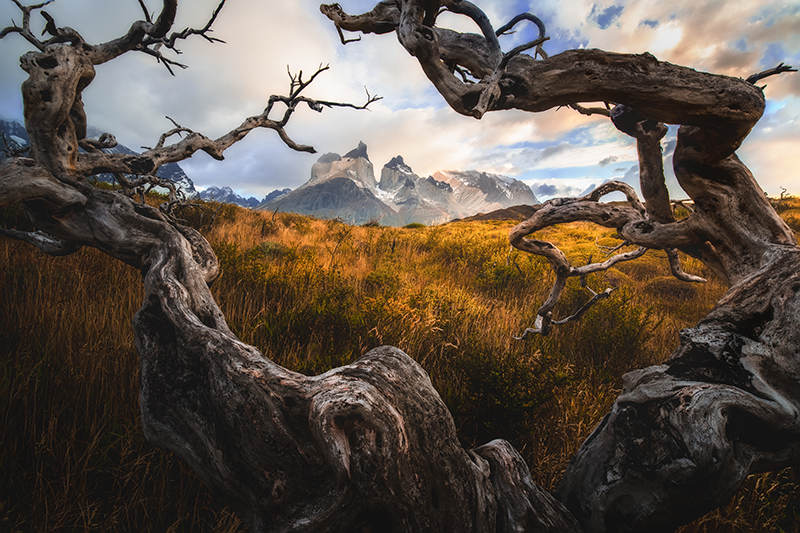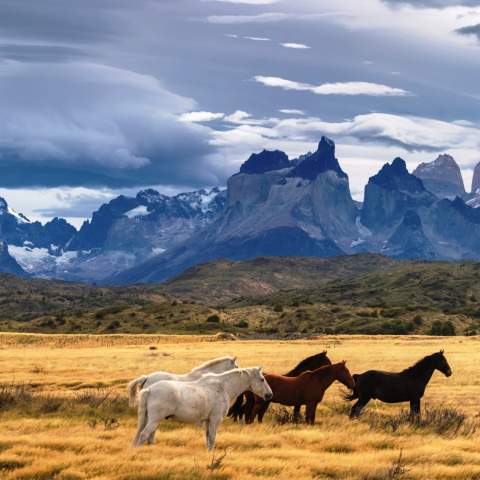06/13/2019

We love being able to show you things you’ve never seen before by taking you to the underappreciated spots or trekking into the underexplored regions of South America and Central America, inspiring a feeling of discovery. We live for the chance to have our guests experience something only a few lucky travelers have ever experienced and we take incredible pride in our ability to craft Central and South America trips that our guests often later describe to friends and family as “a trip of a lifetime.”
If it were possible, we’d make sure every Southern Explorations trip explored the new and truly undiscovered—roaming through untouched wilderness and exploring new frontiers in the purest sense of the word. Unfortunately, we’re too late. Possibly more than 14,000 years too late.
While the understanding of the chronology of human migration is constantly evolving, evidence uncovered in recent years suggests that the first travelers to ever explore Latin America may have done so in the Late Pleistocene age in the 13th millennium BC.
For instance, evidence exists of human activity at Monte Verde in Llanquihue Province, Chile, dated to around 12,500 BC, though at the time the ice fields and subsequent large meltwater streams would have made settlement difficult. Overall, archaeological evidence suggests the region has been inhabited continuously by a variety of interchanging cultures and various waves of migration since at least 10,000 BC. Still, the details of who went where when remain murky at best.
What we do know is that as giant ice sheets receded and carved out the blueprint of the Patagonian landscapes we revel in today, people soon followed in their wake. At sites like the Cueva del Milodon - most famous for the 1895 discovery of skin, bones and other parts of an ancient giant ground sloth – evidence of human activity strongly suggests people may have been in the region at least 12,000 years ago. Meanwhile, Argentina’s famous Cueva de las Manos, the cave covered in wall paintings of hundreds of hands, dates to approximately 8,000 BC.
These first people of Patagonia would have been wandering into a rather unkind environment with the glaciered Andes to the west and the Atlantic Ocean to the east corralling them in among massive turquoise-colored lakes, emergent forests, and a rocky surface of crags and crevices. It was in these rocky spaces that the first Patagonians took shelter and left evidence of their forays into the interior of the region.
Most human activity at the time appears to have existed along the Pacific coast where the Yaghan, Kaweshqar, and Chonos people lived. More cultures like the Tehuelches settled throughout north, south central and far south of Patagonia over time, while the Selk’nam moved into the north and the Haush into the southeast. The archipelagos in the south west became home to the Yàmana as the Kawéskar settled into the coastal area and islands in western Tierra del Fuego and the southwest mainland. The Chonos would occupy the north of Taitao Peninsula, all existing in the region into the 1500s.
So, as much as we’d like it to be the case, Southern Explorations cannot take you to truly undiscovered places or roam through genuinely uncharted wilderness in Patagonia. We’d need a time machine to take us back a few millennia to pull that off. However, what we can do is get you there in 2019-2020 and beyond. Isn’t it time you joined the 13-century-old fellowship of intrepid wanderers compelled to explore Patagonia?
Find inspiration for your Patagonia trip, and give us a call today to start planning your trip to discover Patagonia today!
Submitted by Zach on Thu, 06/13/2019 - 1:03pm

We love being able to show you things you’ve never seen before by taking you to the underappreciated spots or trekking into the underexplored regions of South America and Central America, inspiring a feeling of discovery. We live for the chance to have our guests experience something only a few lucky travelers have ever experienced and we take incredible pride in our ability to craft Central and South America trips that our guests often later describe to friends and family as “a trip of a lifetime.”
If it were possible, we’d make sure every Southern Explorations trip explored the new and truly undiscovered—roaming through untouched wilderness and exploring new frontiers in the purest sense of the word. Unfortunately, we’re too late. Possibly more than 14,000 years too late.
While the understanding of the chronology of human migration is constantly evolving, evidence uncovered in recent years suggests that the first travelers to ever explore Latin America may have done so in the Late Pleistocene age in the 13th millennium BC.
For instance, evidence exists of human activity at Monte Verde in Llanquihue Province, Chile, dated to around 12,500 BC, though at the time the ice fields and subsequent large meltwater streams would have made settlement difficult. Overall, archaeological evidence suggests the region has been inhabited continuously by a variety of interchanging cultures and various waves of migration since at least 10,000 BC. Still, the details of who went where when remain murky at best.
What we do know is that as giant ice sheets receded and carved out the blueprint of the Patagonian landscapes we revel in today, people soon followed in their wake. At sites like the Cueva del Milodon - most famous for the 1895 discovery of skin, bones and other parts of an ancient giant ground sloth – evidence of human activity strongly suggests people may have been in the region at least 12,000 years ago. Meanwhile, Argentina’s famous Cueva de las Manos, the cave covered in wall paintings of hundreds of hands, dates to approximately 8,000 BC.
These first people of Patagonia would have been wandering into a rather unkind environment with the glaciered Andes to the west and the Atlantic Ocean to the east corralling them in among massive turquoise-colored lakes, emergent forests, and a rocky surface of crags and crevices. It was in these rocky spaces that the first Patagonians took shelter and left evidence of their forays into the interior of the region.
Most human activity at the time appears to have existed along the Pacific coast where the Yaghan, Kaweshqar, and Chonos people lived. More cultures like the Tehuelches settled throughout north, south central and far south of Patagonia over time, while the Selk’nam moved into the north and the Haush into the southeast. The archipelagos in the south west became home to the Yàmana as the Kawéskar settled into the coastal area and islands in western Tierra del Fuego and the southwest mainland. The Chonos would occupy the north of Taitao Peninsula, all existing in the region into the 1500s.
So, as much as we’d like it to be the case, Southern Explorations cannot take you to truly undiscovered places or roam through genuinely uncharted wilderness in Patagonia. We’d need a time machine to take us back a few millennia to pull that off. However, what we can do is get you there in 2019-2020 and beyond. Isn’t it time you joined the 13-century-old fellowship of intrepid wanderers compelled to explore Patagonia?
Find inspiration for your Patagonia trip, and give us a call today to start planning your trip to discover Patagonia today!
Most Popular Patagonia Trips & Tours
| Trip | Price | Days | Highlights |
|---|---|---|---|
| Australis Glacier Cruise & Patagonia Hiking | $6,560 | 12 Days | Mt. Fitz Roy & Cerro Torre, Cape Horn, Tierra del Fuego National Park, Los Glaciares National Park, Perito Moreno Glacier |
| Classic Patagonia | $3,495 | 7 days | Buenos Aires , Perito Moreno Glacier, Glacier National Park, Mt. Fitz Roy, Cerro Torre |
| Classic Patagonia & Torres del Paine | $6,425 | 10 Days | Los Glaciares National Park, Torres del Paine National Park, Perito Moreno Glacier, Classic Treks to Mt. Torre and to Mt. Fitz Roy |















